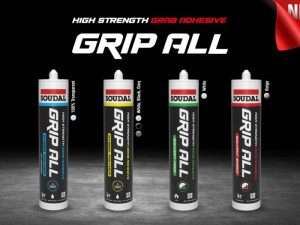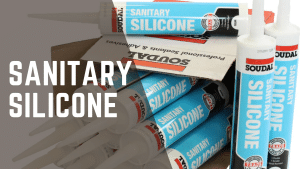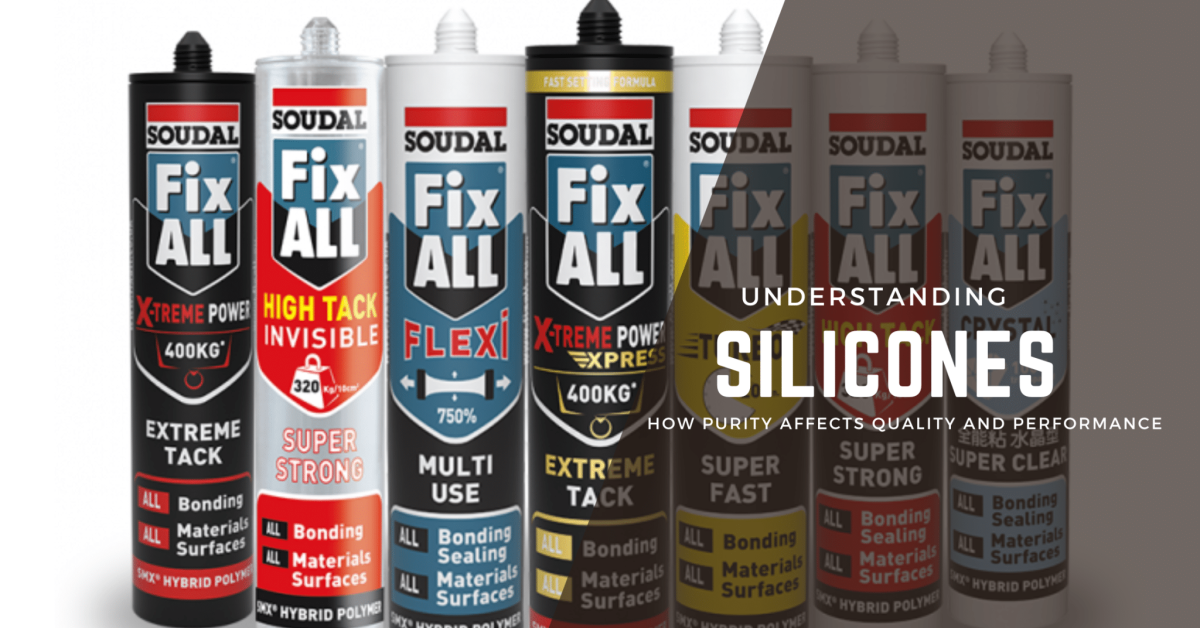You are stepping into a realm where innovation meets functionality with hybrid polymers, transforming the adhesive and silicone markets. These versatile materials combine the best attributes of different polymers, offering enhanced performance, durability, and environmental resistance. As you probe into this topic, you will discover how hybrid polymers are not merely an evolution but a revolution, paving the way for safer and more efficient solutions in various industries. This exploration will illuminate their potential and the benefits they bring to your applications.
Hybrid Polymers Key Takeaways:
- Versatility: Hybrid polymers offer a unique combination of properties from both adhesives and silicones, creating materials suitable for a wide range of applications.
- Enhanced Performance: These polymers exhibit superior adhesion, flexibility, and resistance to environmental factors, leading to improved durability and longevity in products.
- Eco-Friendly Solutions: Many hybrid polymers are designed to be more environmentally friendly, reducing the need for harmful solvents and enabling greener manufacturing processes.
- Market Innovation: The introduction of hybrid polymers fosters innovation in the adhesive and silicone markets, encouraging the development of new formulations and products.
- Cost-Effectiveness: By combining multiple functionalities into one product, hybrid polymers can reduce the number of materials needed, potentially lowering overall production costs.
Understanding Hybrid Polymers
Before delving into the advantages of hybrid polymers, it is crucial to grasp their fundamental nature. Hybrid polymers bridge the gap between traditional polymers, such as adhesives and silicones, creating versatile materials that enhance performance. These innovative substances combine properties of different polymers to yield superior qualities, making them increasingly popular in various applications.
Definition and Composition
Definition: Hybrid polymers consist of two or more distinct polymeric components, which are combined to achieve desirable characteristics. This composition often includes a mix of organic and inorganic materials, allowing for tailored properties such as increased strength, flexibility, and durability while reducing limitations seen in traditional adhesives and silicones.
Comparison to Traditional Polymers
At a glance, the differences between hybrid polymers and traditional options are apparent. Below is a table that outlines key contrasts:
Comparison of Hybrid and Traditional Polymers
| Property | Hybrid Polymers |
| Flexibility | High |
| Durability | Superior |
| Thermal Stability | Enhanced |
| Adhesion Quality | Exceptional |
| Environmental Resistance | Greater |
Hence, hybrid polymers offer several advantages over traditional counterparts. They not only provide high flexibility and testament to durability, but also exhibit enhanced thermal stability and superior adhesion qualities. The composition of hybrid polymers results in a greater resistance to environmental factors, making them ideal for a wide range of applications across the adhesive and silicone markets. Your investment in these advanced materials can lead to improved performance and longevity in your projects.
Applications in the Adhesive Market

Performance Advantages
At the core of hybrid polymers are their exceptional performance advantages, including superior bonding strength, flexibility, and resistance to environmental factors. These materials can withstand extreme temperatures and harsh conditions, ensuring your applications remain reliable and durable over time. This versatility makes hybrid adhesives a preferred choice for industries that require high-performance solutions.
Key Industries Utilizing Hybrid Adhesives

And, the construction industry is also leveraging hybrid adhesives due to their strong bonding properties and ability to adhere to a variety of materials. With growing demand for energy-efficient building solutions, these adhesives ensure a reliable seal against moisture and environmental stressors. Additionally, the packaging industry benefits from hybrid polymers, which offer enhanced product protection while minimising the use of harmful solvents. By adopting these innovative materials, you can significantly enhance the sustainability and performance of your products across diverse applications.
Innovations in Silicones
Now, the landscape of silicone materials is undergoing a transformative shift with the introduction of hybrid polymers. These innovative solutions combine the best properties of traditional silicones with advanced polymer technologies, enhancing performance and versatility. You can expect improved adhesion, durability, and environmental resistance, which makes them ideal for a variety of applications in the adhesive and silicone markets.
Hybrid Silicone Formulations
Hybrid silicone formulations integrate both silicone and other polymer attributes to create versatile materials that deliver exceptional performance. By leveraging this combination, you gain access to products that exhibit superior flexibility and thermal stability, which can significantly enhance your projects. These formulations are designed to meet the rigorous demands of modern applications.
Benefits Over Conventional Silicones

Formulations that incorporate hybrid properties deliver significant benefits, making them a superior choice. You will find that these materials not only provide better adhesion, but also exhibit greater flexibility and long-lasting durability. Additionally, they can withstand extreme temperatures and are more resistant to UV damage and weathering, ensuring they retain their performance over time. The combination of these features results in a lower total cost of ownership due to decreased maintenance and replacement needs, ultimately making your projects more efficient and reliable.
Environmental Considerations
Many industries are increasingly recognising the imperative of sustainability, leading to the emergence of hybrid polymers as a transformative force in the adhesive and silicone markets. By integrating environmentally-friendly practices, these materials not only deliver on performance but also help mitigate your environmental footprint, aligning with global efforts towards a more sustainable future.
Sustainable Practices in Production
Practices in the production of hybrid polymers have evolved significantly to reduce waste and energy consumption. Manufacturers are now employing processes that minimise the use of hazardous substances, ensuring the safety of both workers and the environment. Additionally, many are utilising renewable resources, which supports sustainable manufacturing and contributes to lower carbon emissions.
Recyclability and End-of-Life Solutions
An imperative aspect of hybrid polymers is their recyclability and innovative end-of-life solutions. These materials are designed with in-built mechanisms for recovery, which supports circular economy initiatives and reduces landfill waste.
Even more encouraging is that advancements in technology have led to improved recyclability of hybrid polymers, enabling them to be reprocessed and reused rather than discarded. This not only conserves resources but also significantly reduces environmental impact. Enhanced end-of-life solutions allow for safe disposal, ensuring that potentially hazardous substances do not enter ecosystems. By adopting these practices, you can contribute to a more sustainable future while enjoying the high-performance characteristics of hybrid polymers.
Future Trends and Developments
Despite the ever-evolving landscape of materials science, hybrid polymers are set to redefine the adhesive and silicone markets. With advancements in formulation technologies, you can expect innovations that enhance performance characteristics, such as improved adhesion, flexibility, and environmental resistance. These developments promise not just better products, but also increased sustainability in your applications, paving the way for a greener future.
Emerging Technologies
Among the cutting-edge technologies shaping the future of hybrid polymers are bio-based materials and smart polymers. These developments aim to offer sustainable alternatives while providing enhanced functionalities. You will find that the integration of these technologies could lead to products that adapt in real-time to their environments, ultimately transforming how you approach adhesion and sealing challenges.
Potential Market Growth
Across various industries, including automotive, construction, and electronics, the demand for hybrid polymers is projected to rise significantly. You should anticipate a surge in their adoption as manufacturers seek to meet high-performance standards while also adhering to stricter environmental regulations.
In addition to the growing demand, the market for hybrid polymers is expected to expand rapidly, with a projected compound annual growth rate (CAGR) of over 10% in the coming years. This growth is fuelled by your increasing need for high-strength, lightweight materials that offer versatility and durability in diverse applications. Companies are keenly aware of this potential and are investing in research and development to harness these polymers effectively, ensuring a robust competitive edge in the market.
Challenges and Limitations
Your exploration of hybrid polymers reveals significant challenges and limitations that need addressing for widespread adoption. These materials still face obstacles regarding production consistency, compatibility with existing systems, and cost-effectiveness, which could hinder their integration into current adhesive and silicone markets. Overcoming these issues is crucial for unlocking their full potential and benefiting users and industries alike.
Technical Hurdles
Beside the remarkable advantages of hybrid polymers, you must also consider the technical hurdles involved in their formulation and processing. Achieving the right balance between the desirable properties of each component can be complex, requiring advanced knowledge and specialised equipment. Any failure in this process may lead to performance issues in real-world applications.
Market Acceptance Issues
For hybrid polymers to succeed, you need to address market acceptance issues. Many potential users remain sceptical about the efficacy of these new materials compared to established adhesives and silicones, which can slow down their adoption despite their potential benefits.
Hence, educating the market about the unique properties and advantages of hybrid polymers is imperative for overcoming these acceptance barriers. Manufacturers and suppliers must highlight successful case studies and performance comparisons to demonstrate reliability and cost-effectiveness. By building trust and demonstrating the long-term benefits of hybrid solutions, you can pave the way for greater integration and acceptance within the adhesive and silicone markets.
Final Words
As a reminder, exploring hybrid polymers positions you at the forefront of innovation in the adhesive and silicone industries. Their unique properties and versatility can significantly enhance your applications, leading to improved performance and sustainability. By integrating these advanced materials into your projects, you can ensure higher quality solutions that meet diverse needs. Embracing this evolution not only elevates your product offerings but also aligns with the growing demand for eco-friendly alternatives. The future of adhesives and silicones is bright, and hybrid polymers are leading the way.
Hybrid Polymers FAQ
Q: What are hybrid polymers, and how do they differ from traditional adhesives and silicones?
A: Hybrid polymers are innovative materials that combine the properties of different polymer types to enhance performance. Unlike traditional adhesives and silicones, which are often limited to specific applications, hybrid polymers offer a blend of advantageous characteristics such as improved flexibility, adhesion strength, and resistance to temperature and moisture. This versatility allows them to be used in a wider range of applications, from construction to automotive industries, making them a promising choice for modern manufacturing and design.
Q: What advantages do hybrid polymers offer in terms of sustainability and environmental impact?
A: Hybrid polymers contribute positively to sustainability by often incorporating eco-friendly components and reducing the use of volatile organic compounds (VOCs). Many formulations are designed to be lower in toxicity and can be produced with renewable resources. Additionally, the durability and longevity of hybrid polymers can lead to reduced material waste over time, as they are often more efficient and require less frequent replacement compared to traditional materials. This ongoing reduction in environmental impact aligns well with contemporary efforts towards sustainable manufacturing and construction practices.
Q: In what industries are hybrid polymers making the most significant impact, and what are some specific applications?
A: Hybrid polymers are transforming various industries, notably construction, automotive, and electronics. In the construction sector, they are used for sealants and adhesives that provide strong bonds under diverse environmental conditions. In automotive manufacturing, hybrid polymers are favoured for bonding components due to their excellent durability and impact resistance. In electronics, these materials are utilised for encapsulating sensitive components, providing protection against moisture and temperature fluctuations. The versatility of hybrid polymers continues to open new avenues for innovation across many sectors.


